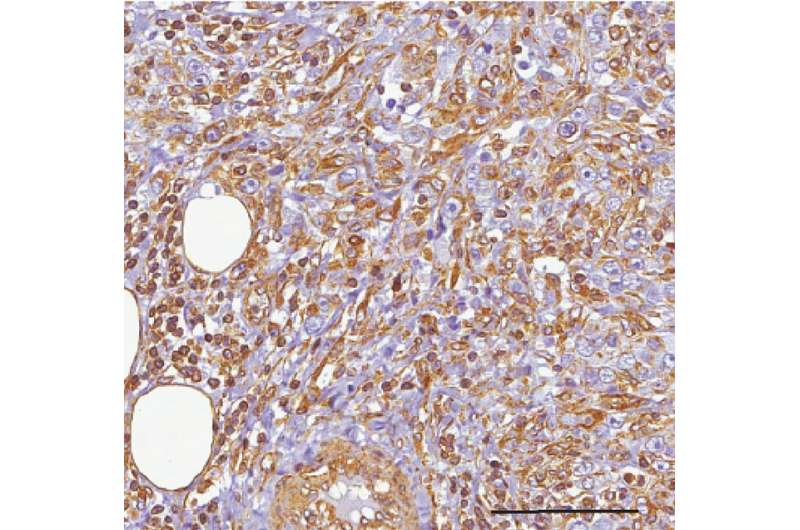Targeting microRNAs could unmask hidden vulnerability in breast cancer stem cells

Researchers in Italy have identified a pair of microRNA molecules that help maintain a population of cancerous stem cells that drive the growth of breast cancers and initiate tumor relapse after treatment. The study, which will be published April 2 in the Journal of Cell Biology (JCB), reveals that targeting these microRNAs makes cancer stem cells more susceptible to some chemotherapies and could potentially improve the prognosis of patients with aggressive forms of breast cancer.
Many tumors contain a small population of cancer stem cells that initiate tumor growth and give rise to the various cell types found in tumors. Moreover, because cancer stem cells are often resistant to radio- and chemotherapies, they can survive and promote tumor relapse and metastasis after initial rounds of treatment. In breast cancer, for example, tumors containing a relatively high number of cancer stem cells have a much poorer prognosis than tumors with fewer stem cells.
Eliminating these stem cells may therefore be crucial for the successful treatment of breast cancer and other tumor types. One class of molecule that might help cancer stem cells to persist within tumors is microRNAs. These short RNA molecules control the fate and identity of cells by regulating the levels of hundreds of longer, protein-encoding "messenger" RNAs.
"We wanted to identify microRNAs required for the maintenance of normal mammary stem cells that are inherited by cancer stem cells and could represent potential therapeutic targets in breast cancer," says Francesco Nicassio, a principal investigator and Center Coordinator of the Center for Genomic Science at the Italian Institute of Technology in Milan.
In the new study, Nicassio and colleagues, including co-senior author Pier Paolo Di Fiore, a group leader at the European Institute of Oncology and professor at the University of Milan, identified two closely related microRNAs, miR-146a and miR-146b, that are present in breast cancer stem cells as well as normal mammary stem cells. Indeed, the levels of these two microRNAs tended to be highly elevated in aggressive breast cancers that have a high number of cancer stem cells and a poor prognosis.
The researchers found that miR-146a/b are required to maintain the pool of cancer stem cells. Depleting these two microRNAs from patient-derived cancer cells reduced the ability of these cells to form new tumors when implanted into mice.
Nicassio and colleagues determined that miR-146a/b regulate hundreds of messenger RNAs, thereby controlling numerous cellular processes such as metabolism and DNA replication. Depleting miR-146a/b from cancer stem cells might alter these processes in ways that leave the cells more vulnerable to chemotherapy. Nicassio and colleagues found that reducing the levels of miR-146a/b made breast cancer stem cells over 20 times more sensitive to methotrexate, significantly improving this metabolic inhibitor's ability to restrict tumor growth in mice.
"While the molecular details remain to be determined, our results clearly show that reducing miR-146a/b levels represents an attractive approach to overcome some forms of drug resistance in the clinical setting, unmasking a 'hidden vulnerability' exploitable for the development of anti-cancer stem cell therapies," Nicassio says.
More information: Tordonato et al., 2021. J. Cell Biol. rupress.org/jcb/article-lookup … 0.1083/jcb.202009053


















